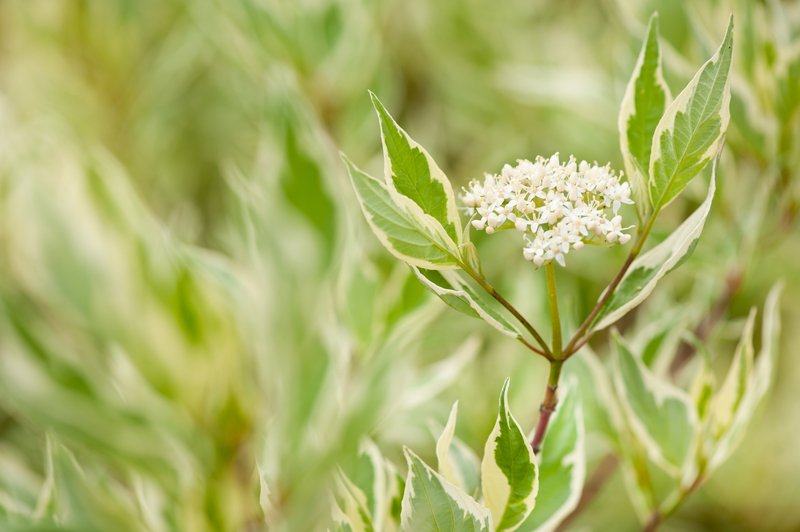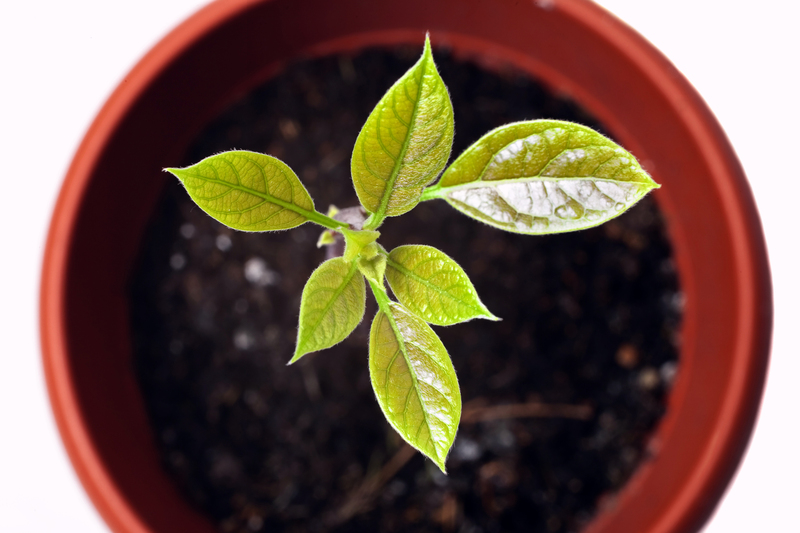Nature Versus Nurture: Tactical Winter Plant Protections
Posted on 26/08/2025
Nature Versus Nurture: Tactical Winter Plant Protections
As the days grow shorter and the chill of winter sets in, gardeners and plant enthusiasts alike are faced with a crucial question: How can we best protect our treasured plants from the harsh grip of winter? In this comprehensive guide, we explore the ongoing debate of nature versus nurture when it comes to strategic winter plant protection. Should we rely on plants' natural adaptations, or do our interventions and nurturing play a more vital role? Join us as we delve deep into the science, strategies, and secrets to keeping your garden thriving--even through the coldest months of the year.
Understanding the Nature vs. Nurture Debate
The classic debate of nature versus nurture isn't just limited to the human experience; it holds real importance in the world of horticulture. In the context of winter plant protection, "nature" refers to the inherent adaptive traits that plants possess to withstand winter's challenges. "Nurture," on the other hand, describes the practical measures and care we provide to fortify our plants against frost, dehydration, and other winter threats.
Nature: Built-in Defenses
- Genetic Hardiness: Some plants have evolved to tolerate freezing temperatures, while others are genetically predisposed to succumb.
- Dormancy: Many perennials and trees enter a state of dormancy, conserving energy by slowing their metabolism.
- Morphological Adaptations: Features like thick bark, waxy leaves, and deep root systems help resist freezing damage.
Nurture: Human Intervention
- Protective Coverings: Using mulch, burlap, or frost blankets to insulate and trap warmth.
- Microclimate Management: Positioning plants in sheltered areas, or using windbreaks to reduce exposure to harsh elements.
- Hydration and Nutrition: Proper watering and feeding schedules boost plant resilience before winter sets in.

Why Winter Plant Protection Matters
Winter, while beautiful, can create treacherous conditions for outdoor plants. Freezing temperatures, high winds, and fluctuating moisture levels all combine to threaten plant health. Even the hardiest of native species sometimes need a little extra care to thrive until spring. By tactically blending nature's built-in defenses with strategic nurturing, gardeners can maximize survival rates and ensure stunning growth come warmer weather.
The Key Threats to Plants in Winter
- Frost and Freeze Damage: Sudden drops in temperature cause water inside plant cells to freeze, leading to cell rupture and tissue death.
- Desiccation: Cold, dry winds and frozen ground can deprive plants of necessary moisture, leading to dehydration.
- Snow Load: Heavy snowfall can break branches, flatten delicate plants, and restrict sunlight.
- Rodent and Pest Activity: Mice, voles, and rabbits often gnaw on bark or foliage when food is scarce.
Tactical Winter Plant Protection Strategies
To ensure a flourishing spring garden, adopting a tactical winter plant protection plan is essential. Here, we explore a variety of winter plant protection techniques, blending natural solutions and human nurturing for superior results.
Mulching: Nature and Nurture Working Together
Mulching is arguably one of the most effective winter plant protections. By applying a layer of organic material (such as straw, leaves, or wood chips) over the soil, you create a thermal buffer that:
- Insulates plant roots against temperature fluctuations
- Retains soil moisture
- Reduces soil erosion from thaw/freeze cycles
Tip: Apply mulch after the first hard frost, to avoid trapping heat-loving pests in the ground.
Frost Cloths and Row Covers: Defensive Shields
Frost cloths, row covers, and burlap wraps are physical barriers that shield plants from subzero temperatures and biting winds. Choose breathable, lightweight fabrics to allow adequate airflow while blocking frost. For shrubs and trees, wrapping the trunk with tree wrap or burlap can prevent sunscald and rodent damage.
Choosing Hardy Plant Varieties: Let Nature Do Its Job
- Select Native Species: Native plants are inherently more adaptable to your local winter conditions.
- Know Your Hardiness Zone: Choose varieties rated for your USDA hardiness zone for the best natural winter plant protection.
Pro Tip: Grouping plants by hardiness makes winter protection easier and more efficient.
Microclimate Management: Manipulating Nature to Nurture
Harness the environment to your advantage by creating microclimates that buffer extremes. Strategic placements--such as planting near south-facing walls, rock gardens, or windbreaks--can significantly reduce winter stress on vulnerable plants.
- Walls and Fences: Radiate heat and block winds.
- Evergreen Shrubs: Act as living windbreaks.
- Retaining Structures or Raised Beds: Improve drainage and temperature control.
Watering: Hydrating Before Frost
While it's true that plants require less water in winter, deep watering before the ground freezes can help them withstand dry conditions. Moist soil retains heat longer than dry soil, offering better protection from freezing. But be cautious: overwatering can encourage root rot.
Anti-Desiccant Sprays: Extra Nurture for Evergreens
Evergreens--including conifers and broadleaf varieties--lose moisture through their leaves in winter. Anti-desiccant sprays form a protective coating, limiting water loss through transpiration.
Use these sparingly, following product instructions for safety and efficacy.
Nature Versus Nurture: Case Studies in Action
Let's look at some real-world applications where blending natural and tactical nurturing leads to winter plant protection success.
Case Study 1: Roses in Cold Climates
- Nature: Many hybrid roses are bred for cold hardiness, yet their exposed graft unions remain vulnerable.
- Nurture: Mounding soil or mulch over the base and using rose cones or straw wraps offers reliable winter plant protection.
- Result: Studies show rose varieties protected both naturally and via nurturing efforts have significantly higher survival and bloom rates in spring.
Case Study 2: Fruit Trees in Variable Winters
- Nature: Deciduous fruit trees enter dormancy, thereby reducing susceptibility to freeze damage.
- Nurture: Wrapping trunks, mulching roots, and utilizing windbreaks minimize trunk splitting and frost injury.
- Result: A combination of both approaches yields healthier buds and larger yields post-winter.
Case Study 3: Container Gardens and Tender Ornamentals
- Nature: Container plants lack the soil insulation available to in-ground plants and are thus less protected.
- Nurture: Moving pots indoors, clustering them against sheltered walls, or wrapping containers can prevent the freeze/thaw cycle from damaging roots.
- Result: Thoughtful nurturing ensures survival and reduces plant loss over the winter months.
Common Mistakes to Avoid in Winter Plant Protection
Strong winter plant protection isn't just about what you do--it's about what you don't do as well. Avoid these frequent missteps:
- Neglecting Fall Preparation: Delaying protective measures until after the first major snowfall often leads to preventable plant damage.
- Improper Mulch Application: Piling mulch against plant stems can harbor pests and rot; always leave a small gap around the base.
- Frequent Watering During Frost: Overwatering during deep freezes can lead to root rot and disease.
- Ignoring Pest Control: Failing to address rodents and insects can result in winter feeding frenzies that damage vulnerable plants.
Innovative Solutions in Tactical Winter Plant Protections
The evolution of horticultural science has brought forth new products and practices to enhance both nurture and nature's efficacy in winter plant protection.
- Thermal Blankets and Heated Mats: These advanced materials apply gentle warmth to critical plant areas, especially in greenhouses or with potted specimens.
- Biodegradable Wraps: Modern wraps break down naturally, reducing waste while offering reliable insulation.
- Smart Irrigation Systems: Precision watering timed to weather forecasts ensures optimal hydration without encouraging disease or rot.

Nurture and Nature: A Partnership for Plant Survival
By now, it's clear that the nature versus nurture argument is better framed as a dynamic partnership--especially where winter plant protections are concerned. While plants possess a remarkable array of genetic tools for winter survival, the targeted care and strategizing provided by gardeners play an equally crucial role in their well-being.
- Observation: Monitor your garden's microclimates and plant responses for tailored interventions.
- Adaptation: Adjust plans based on species, severity of winters, and new horticultural discoveries.
- Continuous Learning: Stay informed about winter plant protection techniques for optimal results year after year.
Checklist for Strategic Winter Plant Protection
- Know your plant's hardiness zone and requirements
- Mulch at the right time and with appropriate materials
- Use frost covers, burlap, and wraps for young or delicate specimens
- Water deeply before the ground freezes
- Protect containers and raised beds from freeze/thaw cycles
- Monitor for rodents and winter pests
Conclusion: Mastering the Art of Tactical Winter Plant Protections
Winter need not spell doom for your beloved garden. The secret to robust and resilient plants lies in embracing a balanced approach, honoring both nature's wisdom and the benefits of human nurture. By understanding your garden's unique needs and taking proactive, tactical measures, even the most fragile plants can awaken in spring unharmed, ready to flourish.
Whether you're a seasoned horticulturist or an enthusiastic novice, arming yourself with the science-based strategies discussed here will grant you peace of mind and greener, healthier landscapes year-round. Remember: every garden is unique, so experiment with these winter plant protection techniques to find the blend of nature and nurture that works best in your climate.
Protect, nurture, and celebrate your plants--even through winter's chill--and you'll be rewarded with a garden as resilient as it is beautiful.



